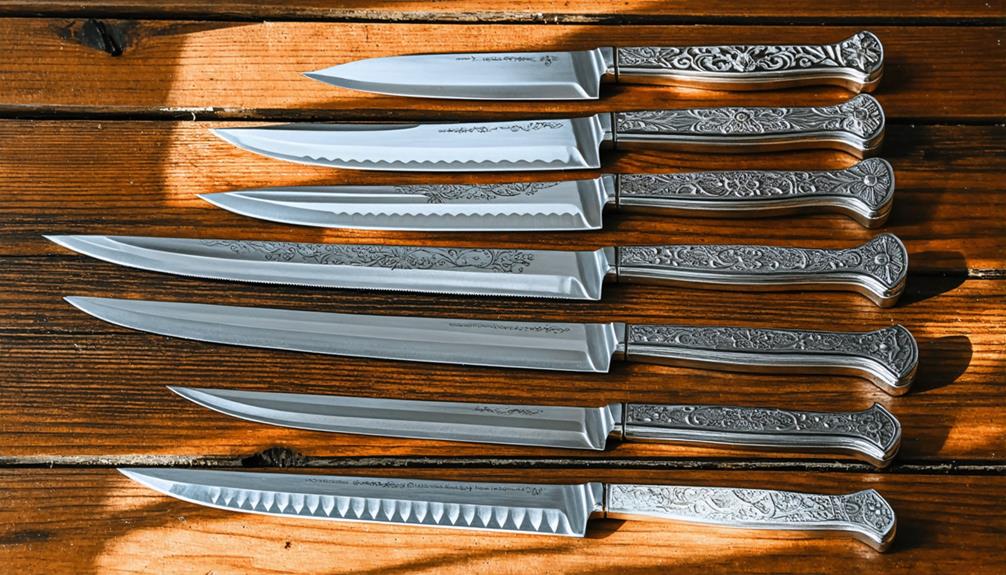
Brainstorm Security Shop

For Orders Over $199

On Any Of Our Products

Details On Refund Page
The world of wholesale knives presents a unique opportunity for retailers to explore diverse markets and increase profitability. By purchasing in bulk, retailers can secure lower costs and ensure a consistent inventory that appeals to a wide array of customers, from culinary experts to outdoor enthusiasts. However, the path to success in this niche market is not without its challenges. Understanding the nuances of consumer preferences, quality standards, and supplier reliability is crucial. What strategies can retailers employ to navigate these complexities and optimize their offerings? This intriguing question opens a broader conversation about mastering the wholesale knife market.
Purchasing knives in bulk offers several distinct advantages, particularly for businesses and avid collectors. One of the primary benefits is cost savings. By buying in large quantities, businesses can often negotiate better pricing from suppliers, enabling them to significantly reduce their per-unit costs. This is especially advantageous for retailers who can then pass these savings on to their customers, enhancing their competitiveness in the market.
For collectors, purchasing in bulk can mean acquiring a variety of knives at a lower overall cost, allowing for a more diverse and extensive collection without exceeding budget constraints.
In addition to cost benefits, bulk purchasing facilitates more effective inventory management. For businesses, maintaining a steady supply of stock is crucial to avoid disruptions in sales and operations. Buying in bulk ensures that there is always a sufficient inventory to meet customer demand, minimizing the risk of stockouts.
This approach also simplifies inventory management practices by reducing the frequency of orders, thereby saving time and administrative effort. Moreover, for collectors, having a well-organized inventory system allows for easier tracking and management of their collections, ensuring that each piece is stored and maintained appropriately.
Understanding the types of wholesale knives available can enhance the purchasing strategy for businesses and collectors alike. The variety in knife types allows retailers to cater to different market demands and preferences effectively. Among the essential categories are chef knives and tactical knives, each serving distinct purposes and appealing to various consumer segments.
Chef knives are indispensable in culinary settings, known for their versatility and precision. They are crafted for tasks like chopping, slicing, and dicing, making them a staple in both professional kitchens and home cooking environments.
Wholesale chef knives are often sought after by restaurant suppliers and culinary schools seeking high-quality, durable options at competitive prices. These knives typically feature a well-balanced design and sharp, stainless steel blades, which enhance the efficiency and comfort of the user.
On the other hand, tactical knives cater to outdoor enthusiasts, military personnel, and survivalists. They are characterized by their robust construction and multifunctional capabilities.
Features such as serrated edges, foldable designs, and ergonomic grips make them suitable for rugged use and emergency situations. Wholesale tactical knives attract retailers focusing on outdoor gear and military surplus, offering consumers reliable tools for demanding conditions.
When considering the purchase of wholesale knives, several key factors can significantly influence decision-making. Among these, knife quality stands paramount. The durability, sharpness, and ergonomic design of knives directly impact user satisfaction and safety. High-quality materials such as stainless steel or high-carbon steel ensure longevity and resistance to corrosion, making them preferable for both retailers and consumers.
Evaluating the craftsmanship is equally essential, as well-constructed knives often demonstrate superior performance and reliability.
Another critical aspect to examine is pricing strategies. Wholesale buyers must weigh the balance between cost and quality to ensure profitability while maintaining product standards. It is important to understand the pricing structure, which may vary based on order volume, brand reputation, and market demand.
Efficient pricing strategies can provide competitive advantages, enabling buyers to offer attractive prices to end customers while safeguarding their profit margins.
Additionally, assessing potential legal and safety regulations associated with knife sales is vital. Compliance with regional laws can prevent future liabilities and enhance business credibility.
In the pursuit of sourcing wholesale knives, identifying reliable suppliers is a crucial step that can significantly impact business success. Engaging in comprehensive supplier research is fundamental to ensuring that the knives you procure meet high standards of quality and reliability.
Quality assurance processes should be a pivotal consideration when evaluating potential suppliers, as they directly influence the credibility and reputation of your business.
To effectively find dependable suppliers, consider the following steps:
Every business faces its own set of challenges, and the wholesale knife industry is no exception. One significant hurdle involves establishing effective pricing strategies amidst fluctuating market trends. Wholesale knife businesses must carefully balance competitive pricing with profitability. This requires a deep understanding of production costs, market demand, and competitor pricing. Setting prices too high risks losing customers, while prices set too low can erode profit margins.
Additionally, staying attuned to market trends is critical. The knife industry is subject to shifts in consumer preferences, technological advancements, and economic conditions. For instance, a growing interest in sustainable and eco-friendly products may influence both the materials used in knife production and the pricing strategies adopted. Companies must remain agile, continuously analyzing market data to anticipate and respond to such changes effectively.
Moreover, adapting to market trends also involves diversification of product offerings. Wholesalers must consider expanding their inventory to include various knife types and brands to meet evolving consumer demands. By doing so, businesses can mitigate risks associated with over-relying on a limited product range.
Ultimately, overcoming these challenges requires a proactive approach, informed decision-making, and a keen eye on both pricing strategies and market trends.
Import regulations for knives vary by country, focusing on knife classifications such as blade length, locking mechanisms, and intended use. Compliance with relevant customs and safety standards is essential to ensure lawful importation and avoid potential penalties.
Proper knife storage is vital for maintaining quality. Ensure knives are stored in a dry environment with effective humidity control to prevent rust and corrosion. Use protective sheaths or cases to safeguard against damage during storage.
Labeling standards and packaging compliance are crucial in ensuring product safety and regulatory adherence. Specific requirements may include country of origin, material composition, and safety warnings, which must align with industry and legal mandates for accurate consumer information.
Custom knife designs offer significant branding opportunities, allowing businesses to incorporate logos or unique designs. This personalization not only enhances brand visibility but also distinguishes products within competitive markets, aligning with strategic marketing objectives and fostering customer engagement.
The environmental impacts of manufacturing include resource depletion and waste. Utilizing sustainable materials and optimizing production processes can mitigate these effects, reducing carbon footprints and fostering eco-friendly practices in the industry.
